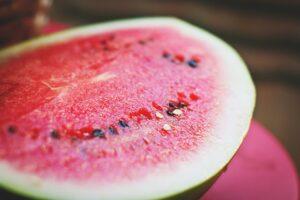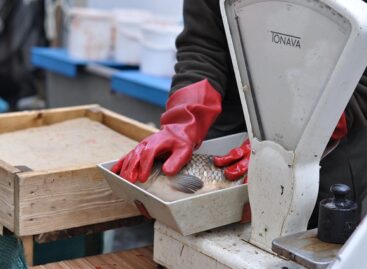Domestic melons will soon appear in stores
A constant temperature above ten degrees is considered perfect weather for the development of plants, including melons, so there is still no weather factor that could influence the favorable ripening of melons. Just as strawberries began to be picked two weeks earlier, cherries also ripen earlier, and this year farmers can also pick large-sized watermelons two weeks earlier, so ripe Hungarian watermelons will be available in stores from June 10. Five days after that, a quantity will be available that the supermarket chains cannot yet serve, but the customer can meet on the free markets. This is what the Association of Hungarian Melon Growers believes in.

Experts expect a harvest of around 140-160,000 tons, of which around 15,000 tons are cantaloupes and the rest are watermelons (Photo: Pixabay)
According to federal president Mátyás Göcző, a decisive stage in open-field melon production has been reached, the foil covering must now be removed from the plants. This means that the plants have reached such a level of development that the foil tunnel is no longer favorable for them. – According to the actors of the sector, thanks to the weather, Hungarian watermelons can appear on the market in less than a month. The increase in price did not avoid this fruit either, but not to the same extent as in the previous two years. The price of input materials and the need for manual labor have also become more expensive, while labor costs have also increased, but what is favorable for farmers is the reduced price of fertilizer, he declared.
The situation of melon production has changed significantly in recent years
While cultivation was previously carried out using conservative technology, melons are now produced in an area half as large as in the previous decades, but in a similar quantity. In addition, last year the production area started to increase, compared to 2,600 the previous year, melons are produced on 2,900 hectares in our country. Experts expect a harvest of around 140-160,000 tons, of which around 15,000 tons are cantaloupes and the rest are watermelons. The amount may vary somewhat depending on the weather, but all conditions are there to produce a quality, tasty crop.
In recent years, Hungarian melon producers have increasingly lost their export markets, which were acquired by the Spanish, Italians and Greeks
This also encouraged domestic producers to change technology and varieties. In order to modernize production, the chamber and the seed distribution companies also organized study trips to competing countries. As a result of this, a slowdown in the reduction of the domestic production area was noticeable, and the place of outdated, constant melon varieties was taken over by grafted and hybrid melons, the proportion of which has now reached 95% of the total melon production area. That is, the use of varieties in Hungary has become competitive at the international level, and production under foil has also appeared, which can be used to advance the start of the season.
2-3% of our watermelon production, while more than 20% of our cantaloupe production comes from foil production
Overall, it can be said that production has become much more efficient, and more disease-resistant varieties have taken the place of the old ones. The yield averages and yield reliability increased, but at the same time the usual delicious taste remained, and even the quality increased.
novenyvedelem.hu
Related news
Balázs Hankó: there is huge potential at the Gödöllő University
🎧 Hallgasd a cikket: Lejátszás Szünet Folytatás Leállítás Nyelv: Auto…
Read more >Cattle farmers receive new targeted support
🎧 Hallgasd a cikket: Lejátszás Szünet Folytatás Leállítás Nyelv: Auto…
Read more >István Nagy: there will be enough Hungarian fish for every family’s table
🎧 Hallgasd a cikket: Lejátszás Szünet Folytatás Leállítás Nyelv: Auto…
Read more >Related news
The secret currencies of loyalty
🎧 Hallgasd a cikket: Lejátszás Szünet Folytatás Leállítás Nyelv: Auto…
Read more >Belgium’s Colruyt Group launches data protection initiative
🎧 Hallgasd a cikket: Lejátszás Szünet Folytatás Leállítás Nyelv: Auto…
Read more >Dishwasher or manual washing-up?
🎧 Hallgasd a cikket: Lejátszás Szünet Folytatás Leállítás Nyelv: Auto…
Read more >






